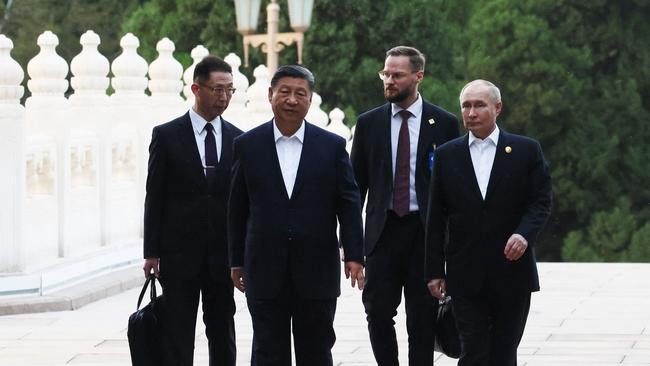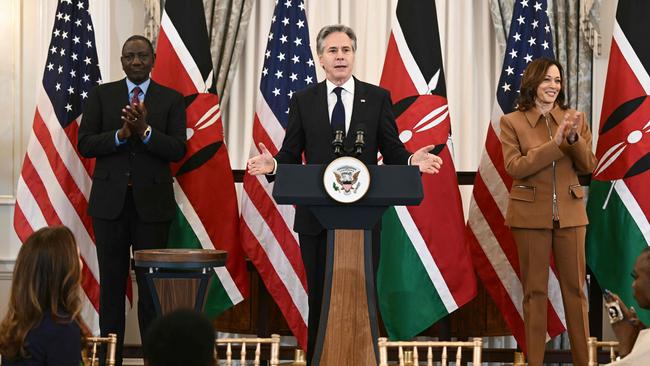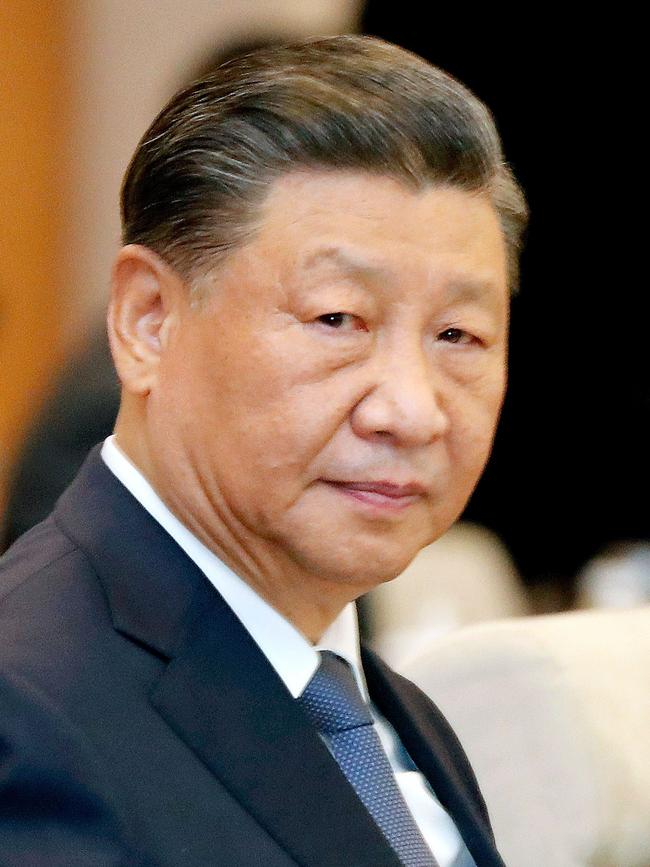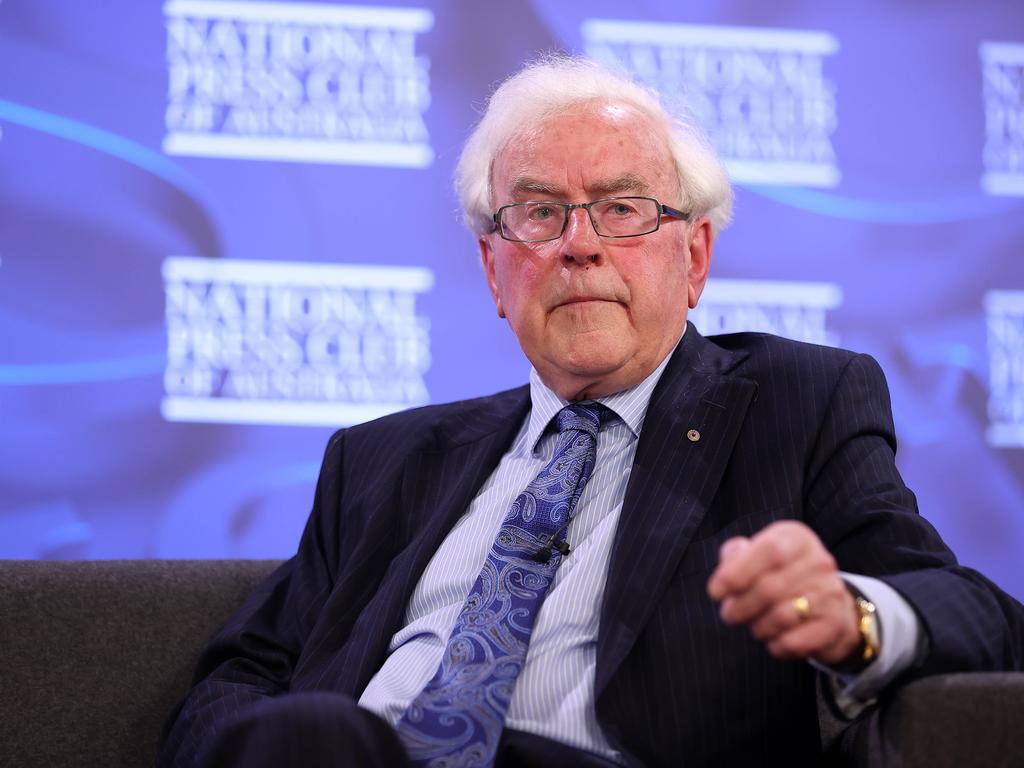Might China strike Taiwan while the West is weak and distracted?
China’s military behaviour around Taiwan gets riskier and more coercive – does a weakened, divided west pose an opportunity for the CCP?

US Secretary of State Antony Blinken argues that without economic support and industrial supplies from Beijing, Russia could not continue its war in Ukraine. Similarly, Iran, the author of Middle East chaos, sells Beijing oil and gets key technologies in return.
Nobody wants a new Cold War, because the economic interdependence between China and the West provides a significant disincentive to war.
But it’s a question of balance. How do we, the US and its allies, remove from Beijing’s grasp leverage over our economies and societies that is strategically threatening? How do we maintain, or recreate, the industrial capacity that must sit behind our military forces for deterrence to be effective?
What does Beijing make of the present situation?

Last week, US General Stephen Sklenka, Deputy Commander of the US Indo-Pacific Command in Hawaii, delivered an important address to the National Press Club. Sklenka is highly respected at the heart of US decision-making. He is the 2024 Scholar of the Australian American Leadership Dialogue, and toured much of Australia as part of that program. He told the Press Club: “The People’s Republic of China represents a major challenge. They continue to pursue the largest peacetime military build-up since World War II, and they regularly engage in coercive behaviour around the Indo-Pacific.”
He outlined a series of aggressive actions by the Chinese navy and coast guard throughout the South China Sea against The Philippines, Vietnam, Indonesia, Malaysia and others. He also described Beijing’s fake “grey zone” tactics: “The PRC uses hundreds of maritime militia vessels under the guise of fishing boats to control access while simultaneously wearing down resistance of nations that might otherwise seek exploration and cultivation of their own waters.”

Much worse is Chinese military behaviour around Taiwan and northeast Asia generally. Sklenka reported that since 2021 there have been 300 “risky and coercive PLA (Chinese military) intercepts” of US, Australian and other allied forces. But worst of all, perhaps, is the trend Sklenka observes in recent years of Beijing becoming more aggressive in the area. He said: “We must take seriously Chairman Xi Jinping’s directive to his own forces to be prepared to invade Taiwan by 2027. His intent is evident as we see the sustained and persistent pressure campaign that the PLA has mounted in the Taiwan Strait since the summer of 2022. These include significantly increased numbers of centre-line (the geographical centre line between China and Taiwan) crossings, incursions into Taiwan’s claimed Air Defence Identification Zone, and more provocative exercises, all of which were rare occurrences just two years ago but have now become normalised PLA actions.”
And finally, Sklenka pointed to the PLA continuing to exercise critical elements of an actual invasion or blockade of Taiwan. Like most senior soldiers, Sklenka is sober, careful to avoid exaggeration and very considered in his remarks.
The situation he’s describing is disturbing, to say the least. What does it tell us about Beijing’s intentions, and what we can do about it?
The aggressive behaviour Sklenka describes does not mean Beijing has decided to invade Taiwan. But it’s simultaneously giving itself that option, and signalling to all interested parties that it might do so.
Just a few days ago, it once more encircled Taiwan with naval and air assets to protest the island democracy’s effrontery in electing a new president.
Under Xi, China has become far more authoritarian, ideological, closed off, less open to outside influences, and less pragmatic about business. Its population is declining in absolute terms and its economy is growing much more slowly than previously. I nonetheless think it’s wrong to talk of “peak China”, as some analysts do. China will continue to grow economically, albeit more slowly, and acquire massive military hardware.
But it faces three broad choices. It could decide that all this militarism and communist orthodoxy is unproductive and return to economic reform and social modernisation, and attempt to catch the West economically and outperform it socially. More likely, it could simply continue its current approach, paranoid at home and abroad, opportunistically looking for ways to advance its strategic objectives, helping the West’s other enemies, making international institutions dysfunctional but, while grumpy, not launching a fundamental challenge.
Or China could decide that with all the strategic turmoil in the West, with the US bitterly polarised internally and for the moment with a weak president, with the West having shown in Ukraine that it has the greatest difficulty sustaining even a non-combat commitment for more than a couple of years, the correlation of forces is as good as it’s going to get for Beijing and therefore it should strike at Taiwan in some major way sooner rather than later.

This might not be full-scale invasion. It could be a devastating blockade, or even a partial invasion, as Russia did in Georgia.
Andrew Krepinevich of the Hudson Institute identifies a key weakness in US and allied planning in not coming to grips with how long a conventional military conflict with China over Taiwan could last. If Beijing launched an action against Taiwan it might win quickly or, if the US opposes it, lose quickly. In any military encounter between the US and China there would always be a danger of escalation to nuclear Armageddon. But Krepinevich argues persuasively that both Washington and Beijing would be able to avoid that.
They might well end up instead waging a limited conventional campaign, keeping lots of things out of bounds, but with neither side able to decisively defeat the other. Ukraine, even given all its differences from Taiwan, shows us how such a situation can develop. Of course this would involve massive economic and other loss to the world, especially to Australia.
But the key point Krepinevich makes is the US and its allies (again especially Australia) are grossly unprepared for anything like this. He writes of the enormous resources needed to sustain such a war: “As Russia’s war in Ukraine has revealed, the US and its allies lack the capacity to surge the production of munitions.” In 1970, the US had a navy of 792 battle force ships. In 2018, congress said it needed 355, it now has only 291. The US Navy itself has identified 500 as the realistic need.
And would either Joe Biden or Donald Trump accept these huge costs to help Taiwan? We in Australia make almost no contribution on this front. With all the warnings we’ve had, the West is still half asleep.







The Chinese Communist Party may well look at the strategic mess in other regions – the Middle East and Europe, to both of which it has contributed mightily – and see historic opportunity.